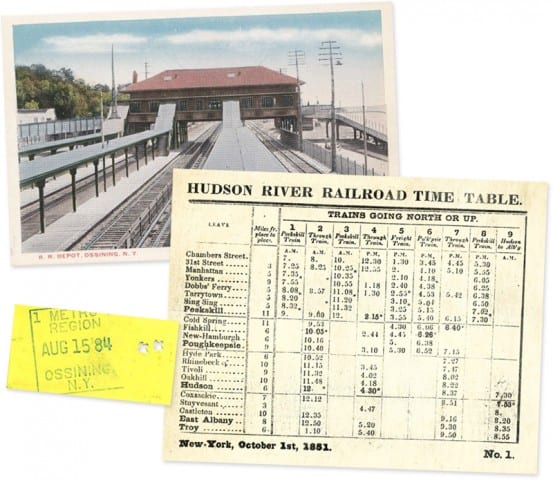
Artifacts from Ossining: Postcard, a 1984 ticket stamped at Ossining, and an 1851 Hudson River Railroad timetable that lists the station as “Sing Sing.”
Welcome to Ossining – probably one of the most widely known locales on the Hudson Line. Unfortunately, it is one of the most well known for a particular landmark located here:
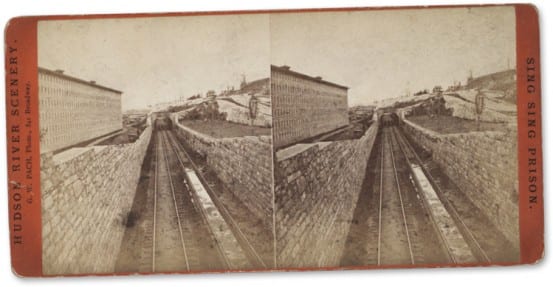
Everybody knows Sing Sing – Late 1800’s stereoview of the railroad tracks running through the prison.
Yes, Ossining is the home of Sing Sing prison, or as it is known now, the Sing Sing Correctional Facility. Dating back to the early 1800’s, the prison has been a longtime feature on the Hudson River, as well as along the railroad. The Hudson River Railroad tracks bisected the prison, and the tracks still pass through there today.
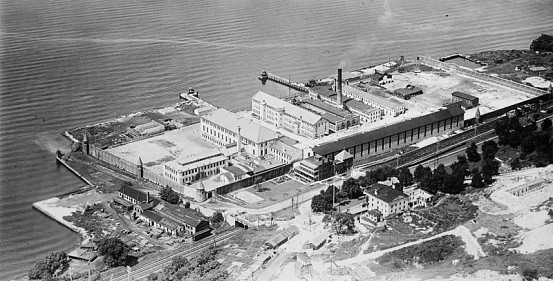
Photo of the railroad tracks going through Sing Sing Prison, circa 1920.
Even those that are not entirely familiar with Sing Sing have probably heard the phrase “sent up the river,” meaning sending someone to prison. Sing Sing is the origin of that phrase – as it is located right up the river from New York City. Interestingly enough, some prisoners weren’t quite sent up the river – they were sent up the railroad tracks. Since the prison was conveniently located right on the railroad, some prisoners were actually transported from the city via train.
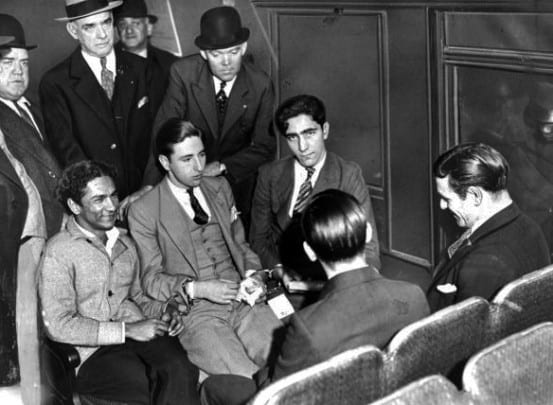
Their nice attire belies their destination – the four seated men on the right are being “sent up the river” by train, circa 1932. Those four were set to die in Sing Sing’s electric chair for killing a police officer. In 1933 the men were granted a new trial, and I can’t find any record of them actually being executed. Assumedly prisoners were not carried on the same train/in the same car as normal passengers.
Ossining’s railroad station is located just north of the prison complex, and is about 30 miles from Grand Central. The station currently on site was built in 1914 in the Renaissance Revival style, replacing the original that was built in 1851. While the original station was at grade, the new station was built above the tracks. Main Street was also modified so it too would cross above the tracks, eliminating the grade crossing.
Just east of the station is the Hudson River, from which a ferry to Haverstraw operates.
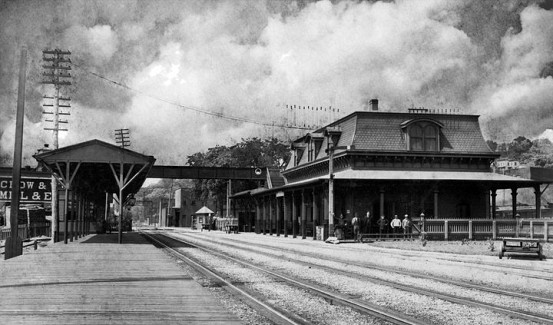
The original station at Ossining, circa 1912. Photo from the Ossining Historical Society.
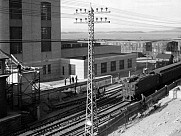 Â
 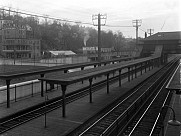 Â
 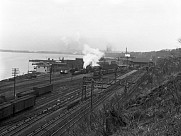 Â
 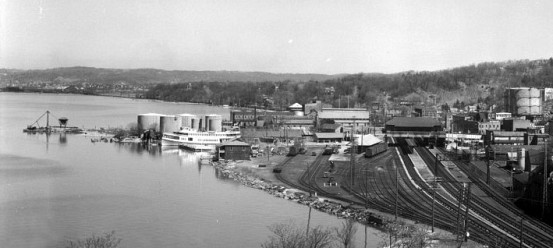
Various views of Ossining. Photos from the Ossining Historical Society.
Like many stations along the Hudson Line, Ossining has recently been fixed up by Metro-North. Some of the work at the station included seven brand new staircases, and four new elevators. Unfortunately during my visit (Ossining was actually the first station I photographed on the Hudson Line!) the station building was closed. The ticket windows are no longer manned, and Metro-North is looking for a tenant to occupy the space in the old station.
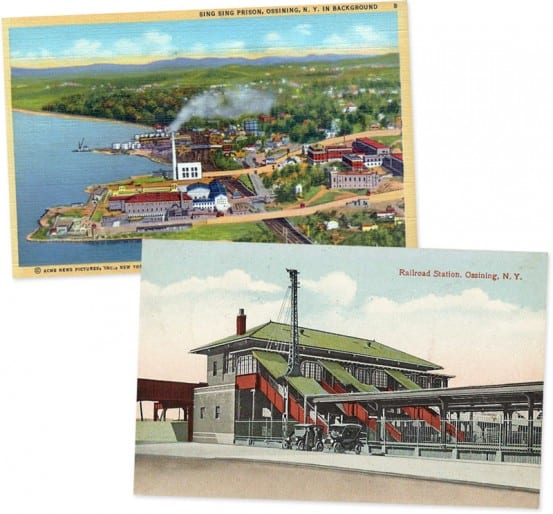
More postcards from Sing Sing, and Ossining station.
Before I wrap this up, one last detail to note about Ossining is that it also has some art. In 2010 a faceted-glass piece by abstract expressionist artist Robert Goodnough was installed through the Arts for Transit program. The piece, titled K—M—G, was originally created as a paper collage, and then translated into the finished glass. The work is comprised of 16 windows, all located in the station’s north overpass. All in all, it makes an attractive addition to a nice Hudson Line station.


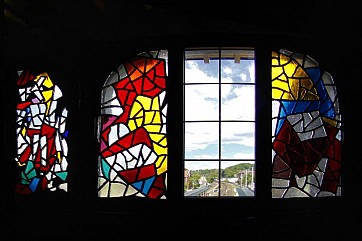
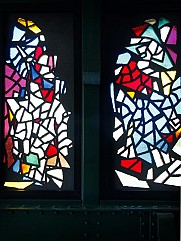


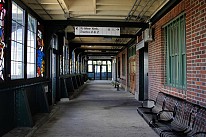
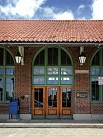
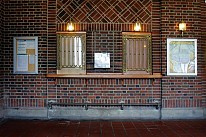
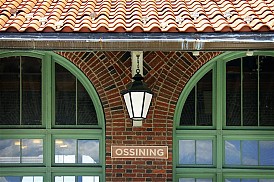
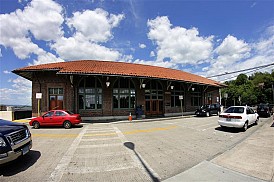
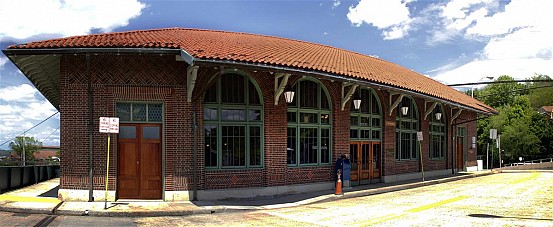
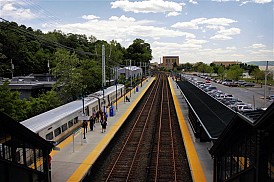
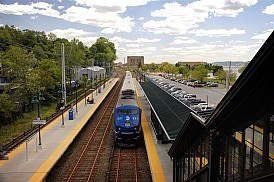
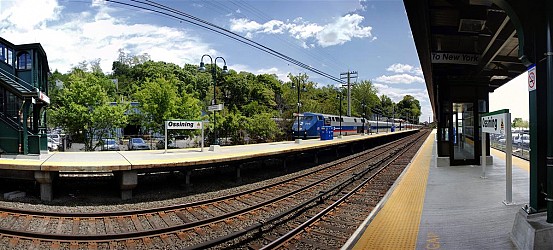
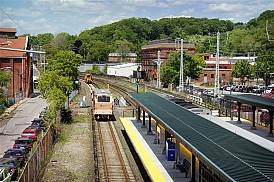
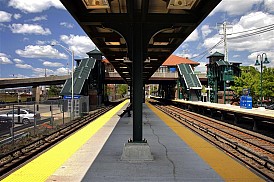
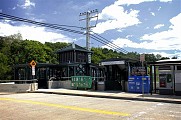
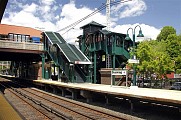
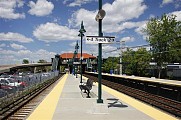
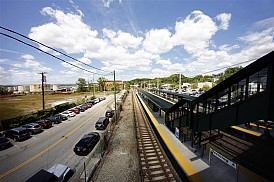
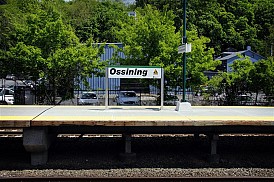
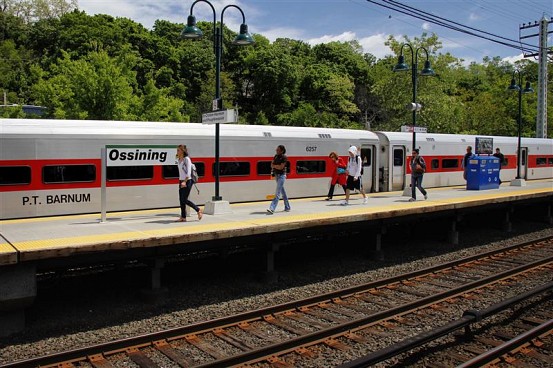
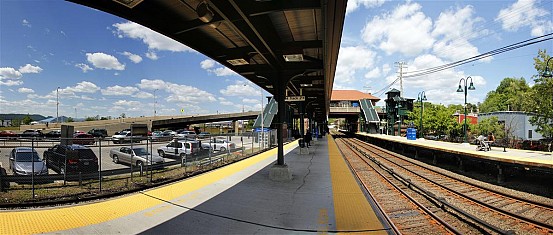
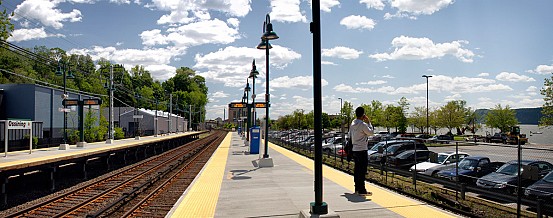
According to an old NYC ETT,Ossining had a spur track into the secure
side of the prison(#24 track) to get coal to the heating plant,and possibly
a high risk prisoner from time to time.
The Gate was not high enought to allow a Brakeman on top
of the car to set the hand brakes!
(ETT#2 ,Eastern Division, NY Terminal Division,dated Oct 27,1957)
The reason the 1851 timetable lists the station as Sing Sing is that was the name of the village at the time. As noted on the Village of Ossining website under “Village History”:
As the prison became notorious, the village tried to distance itself from the prison’s harsh reputation and changed its name to Ossining on March 25, 1901.
Picture 6 (0f 33) wasn’t clear enough for me to be sure, but it looks like the locomotive is one of the tri-power (Diesel, third rail, battery) ones that were built in the late 20’s and normally used for freight. I guess the term “hybrid” was not used in that day.
NYC class DES3,normally used on the W30th st branch as
a switcher,during the warmer months used as part time passenger/
express power. The only drawback was the diesel plant wasn’t
able to keep the batteries charged ,had a 2 hour life span away
from the 3rd rail.